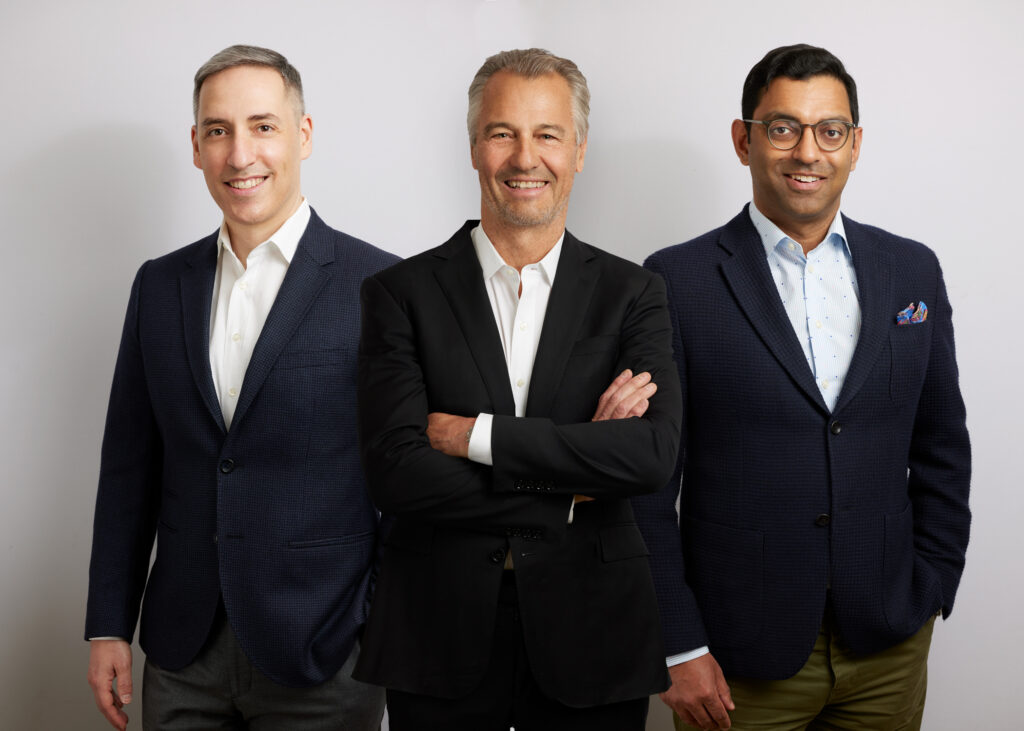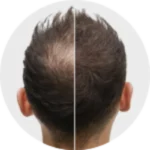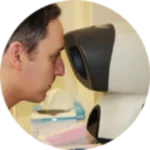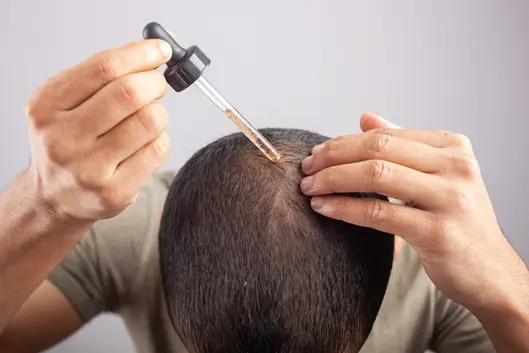Minoxidil/Rogaine Solution
Minoxidil is the generic name for Rogaine, a topical solution used to prevent hair loss and to help regrow hair in people with genetic hair loss or androgenetic alopecia.

Minoxidil is the generic name for Rogaine, a topical solution used to prevent hair loss and to help regrow hair in people with genetic hair loss or androgenetic alopecia.


Toronto Hair Transplant Surgeons are internationally known for our pioneering work in hair transplantation.
Minoxidil is the generic name for a topical solution applied to the scalp used to prevent hair loss in those with male pattern hair loss or female pattern hair loss. Together, these two types of hair loss are called genetic hair loss, or androgenetic alopecia. It is also used to regrow hair in people with genetic hair loss, or androgenetic alopecia. When used daily for 3-6 months or more, it is effective at preventing hair loss and stimulating hair growth.
Topical minoxidil solution is one of only two Health Canada and FDA-approved medications specifically designed for regrowing hair. The most common brand name for topical minoxidil solution is Rogaine. These are the same solutions. The other Health Canada/FDA-approved medication is called finasteride; you can learn more about that here.
Although technically topical minoxidil solution is only approved for hair loss and hair growth on the scalp, evidence shows that it can also be effective for enhancing beard and eyebrow hair growth.
Scientists believe that minoxidil/Rogaine works to stimulate hair growth by increasing blood flow to the scalp. This stimulates hair follicles that are in a resting (telogen) phase back into an active growth (anagen) phase.

Toronto Hair Transplant Surgeons are internationally known for our pioneering hair transplantation work.
Our huge archive is here to help you see what we can do for you. Use the link below to view some sample cases.
Minoxidil/Rogaine is a “prodrug” that must be converted by your body into its active form, minoxidil sulfate. This active compound causes blood vessels in your scalp to dilate, or open up, increasing blood flow to the scalp.
Yes! About 85-90% of people with male pattern hair loss or female pattern hair loss who use topical minoxidil solution for at least a year will stop losing any more hair. About 50% of people who use it will see some degree of improved hair growth. The amount of improved hair growth can vary from a little to a lot or something in between. Each person responds differently. Improved hair growth is most likely to occur towards the back of the scalp (crown area) compared to the front, especially in people with more advanced hair loss.

Familiarize yourself with our layout before you come in.
Visit the gallery to take a peek at our Oakville based clinic layout and surgical rooms.
At a minimum, it takes about 6 months of using topical minoxidil solution to see any improved hair growth. However, many people may only notice a slowing or stopping of their hair loss after 6 months. For them, it may take up to a year of using topical minoxidil solution before noticing improved hair growth. For this reason, we recommend trying topical minoxidil solution for at least a year before deciding if it works for you.
Topical minoxidil solution is the only form approved for regrowing hair. Topical minoxidil solution is available in several types.
Follow the directions on your bottle of topical minoxidil solution. Generally speaking, you should apply a small amount of minoxidil to the areas affected by hair loss. However, you can also apply minoxidil to areas that are not yet affected by hair loss to prevent hair loss in those areas.
Minoxidil should be applied directly to a dry scalp. Most of the minoxidil solution is absorbed within the first hour of application; however, you should wait for at least 2-4 hours before showering or swimming. Do not blow-dry your hair after applying minoxidil solution, as this will cause the solution to evaporate before being absorbed by your scalp.

Minoxidil should be used for as long as you want to maintain the hair that was thickened or improved by the minoxidil. It is important to know that stopping minoxidil will not cause you to lose any hair that you wouldn’t have already lost if you’d never used minoxidil at all. Missing an occasional application of minoxidil will not result in hair loss. Stopping minoxidil completely will cause a gradual loss of the improvement achieved by using minoxidil over the course of about 3 months. Hair loss that was being prevented by minoxidil may also occur.
No. Minoxidil will help stimulate thinning or dying hair follicles to regrow thicker hair for as long as 2-3 years. After that, minoxidil continues to keep the hair in the growing (anagen) phase so that new hair is thicker and grows for a longer period of time. After three years, most people do not see a continued improvement because the thinning and dying hair follicles have been stimulated and have regrown. They might assume they have developed a tolerance, or that the minoxidil has stopped working. However, the minoxidil is still continuing to maintain the previously thinning follicles. Stopping minoxidil will cause the stimulated hair to re-enter a shedding and loss (telogen) phase.
Minoxidil can be useful in conjunction with a hair transplant for a number of reasons:
Topical minoxidil/Rogaine is very safe. Other forms of minoxidil, such as oral tablets that you swallow, have a higher rate of undesirable side effects, such as hair growth in unwanted areas, and may have significant effects on your heart at higher doses. For this reason, topical minoxidil solution is the preferred choice for improving hair growth.. Oral minoxidil is not approved for regrowing hair.
The most common side effects of topical minoxidil are:
Patients who have a history of heart disease should discuss the use of minoxidil with the doctor who looks after their heart. Patients using systemic cyclosporine should not use minoxidil. Patients with a known adverse reaction or allergy to propylene glycol should not use minoxidil. Minoxidil may not work as well in patients taking aspirin, as aspirin inhibits the conversion of minoxidil to its active form.
Keep the bottle tightly capped when not in use. Keep at room temperature. Protect from direct sunlight.




435 Reynolds Street, Suite 206,
Oakville, Ontario, Canada, L6J 3M5
© 2001-2025 Toronto Hair Transplant Surgeons. All Rights Reserved. Designed by scaleup42.com